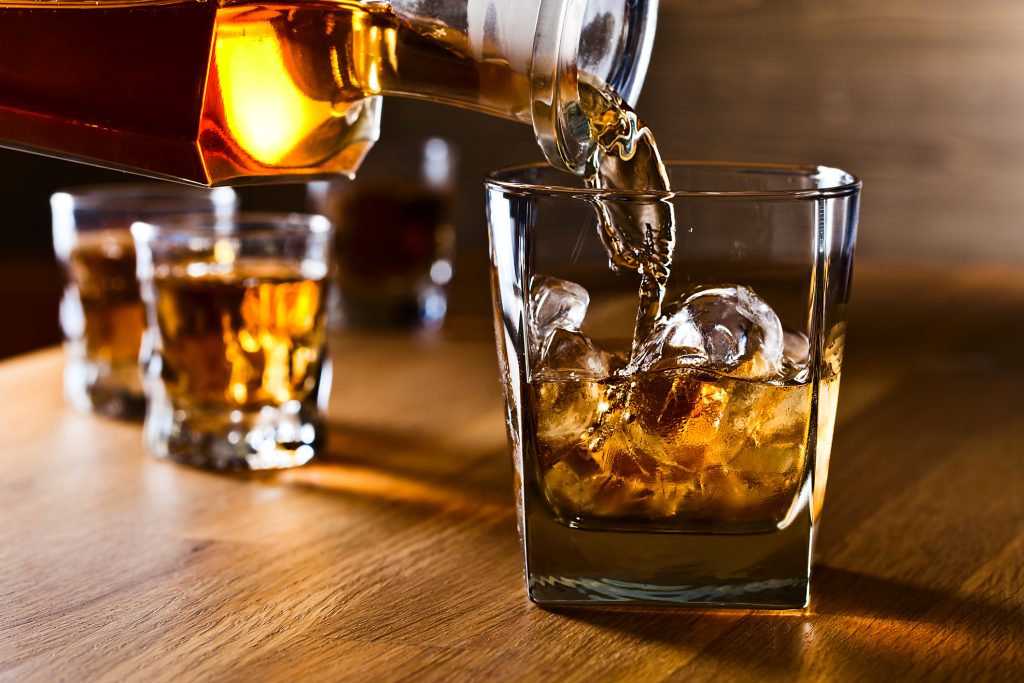Beer is gaining immense popularity among the millennial generation as its consumption is rapidly inclining. The incorporation of flavors and varying alcohol percentages shall grant manufacturers the ability to capture more consumers. With the increasing number of social gatherings, the beverage consumption witnessed a rapid incline in several countries. As per Fortune Business Insights™, the market for beer reached USD 989.48 billion in 2028.
Manufacturers constantly aim at offering innovative beers with several flavors to enhance the adoption of the product.
Closure of Bars During the Pandemic May Impede Market Progress
Governments imposed stringent lockdown regulations to control the virus spread and maintain a safe working environment. However, this imposition led to a complete halt on restaurants and bars during the pandemic. Furthermore, the complete ban on alcohol in countries, such as India, immensely challenged manufacturers. However, lockdown relaxations allowed manufacturers to function normally and recover their costs. As consumers were confined to the spaces of their homes, the product adoption increased rapidly. These factors leveraged the overall industry.
Factors Responsible for Surging Product Demand
- Rising disposable incomes are expected to enhance the beverages’ consumption.
- Increasing acceptance of western culture may elevate consumption.
- Incorporating flavors and a slew of alcohol ranges may attract consumers, thereby boosting demand.
- Increasing modernization leads to the adoption of high-quality beverages, thereby allowing for strong sales figures.
- Rising consumption and the presence of several brands globally shall enhance the industry’s momentum.
- Rapidly increasing socialization activities may enhance the consumption.
- Availability of low and no alcohol beers may facilitate sales worldwide.
- The presence of a diverse consumer base is expected to enhance the demand for the beverage.
- Increased inclination toward premium beers is estimated to enhance consumption globally.
- Rising drinking practice globally is expected to escalate the demand for the beverage.
Major Challenges for the Global Industry
- Provincial acts restricting alcohol advertisements may hinder the industry’s progress.
- Restrictions on alcohol production during the pandemic.
- Alcohol ban in some countries hampers the adoption of the beverage.
Crucial Strategies Incorporated by Major Players
Major players are focusing on implementing surrogate advertising to mitigate problems regarding alcohol advertising and enhance their sales. Furthermore, companies have incorporated the launch of novel product launches to enhance their brand image.
Molson Coors Beverage Co. announced its award-winning juicy and hazy pale ale named Moon Haze in the U.S. in August 2021. Through this launch, the company aimed at enhancing its brand image.
Companies comply with safety standards by adopting premium materials and offering a slew of products to enhance their sales and global sales performance.
Some of the Players Operating in this Industry
- Anheuser-Busch InBev (Leuven, Belgium)
- Heineken N.V. (Amsterdam, Netherlands)
- China Resources Breweries (Beijing, China)
- Carlsberg A/S (Copenhagen, Denmark)
- Diageo Plc (London, U.K.)
- Molson Coors Beverage Company (Illinois, U.S.)
- Boston Beer Company (Massachusetts, U.S.)
- Asahi Group Holdings Ltd (Tokyo, Japan)
- Kirin Holdings Co. Ltd (Tokyo, Japan)
- Beijing Yanjing Beer Group Corporation (Beijing, China)
Strategic Approaches and Increasing Alcoholic Socialization May Facilitate Consumption
Through complete research of the global industry, it can be observed that the global industry may be elevated because of strategic approaches by manufacturers to overcome their challenges globally. Furthermore, the millennial generation’s increasing adoption of premium beer is a major pushing factor for the overall industry. The industry faced major challenges during the COVID-19 pandemic due to the ban on alcohol and manufacturing restrictions. However, the resumption of activities enabled manufacturers to recover their costs and enhance sales. Moreover, the strong demand for flavored beers and increasing acceptance of westernization allowed for increased consumption. These factors are indicative of the huge potential for this industry globally.



